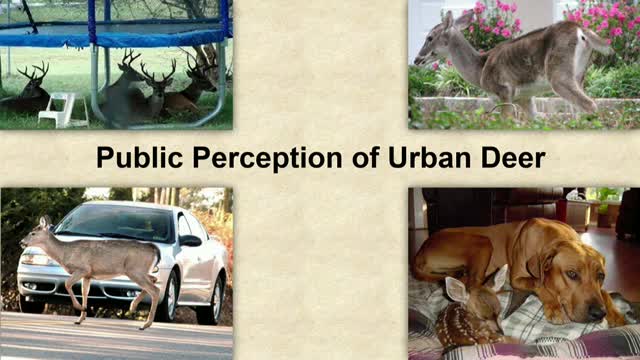Community unites to tackle deer population crisis
June 19, 2024 | Universal City, Bexar County, Texas

This article was created by AI summarizing key points discussed. AI makes mistakes, so for full details and context, please refer to the video of the full meeting. Please report any errors so we can fix them. Report an error »

In a recent government meeting focused on wildlife management, officials addressed the growing concerns surrounding the white-tailed deer population and its impact on local communities. The discussion highlighted the need for a structured approach to identify and resolve issues stemming from deer interactions, which range from property damage to vehicle collisions and health concerns.
The speaker emphasized the importance of community engagement in recognizing the problems associated with the deer population. \"Typically, I don't get invited to talk unless people are concerned,\" they noted, underscoring the necessity of understanding community perceptions and experiences. Identifying the core issues is the first step toward effective management, with the speaker urging attendees to come together to discuss and reach a consensus on the problems at hand.
Once the issues are identified, the next challenge lies in establishing clear goals for management. Potential objectives include reducing the deer population, minimizing vehicle collisions, and ensuring the health of the deer, which has become a concern due to sightings of emaciated animals. Additionally, the speaker pointed out the significance of water quality, particularly for communities like New Braunfels, where tourism is closely tied to the health of local rivers.
The meeting underscored that while recognizing problems may be straightforward, achieving consensus on solutions is often contentious. The speaker called for collaborative discussions among community members to navigate these disagreements and develop a comprehensive management strategy that addresses both human and wildlife needs.
The speaker emphasized the importance of community engagement in recognizing the problems associated with the deer population. \"Typically, I don't get invited to talk unless people are concerned,\" they noted, underscoring the necessity of understanding community perceptions and experiences. Identifying the core issues is the first step toward effective management, with the speaker urging attendees to come together to discuss and reach a consensus on the problems at hand.
Once the issues are identified, the next challenge lies in establishing clear goals for management. Potential objectives include reducing the deer population, minimizing vehicle collisions, and ensuring the health of the deer, which has become a concern due to sightings of emaciated animals. Additionally, the speaker pointed out the significance of water quality, particularly for communities like New Braunfels, where tourism is closely tied to the health of local rivers.
The meeting underscored that while recognizing problems may be straightforward, achieving consensus on solutions is often contentious. The speaker called for collaborative discussions among community members to navigate these disagreements and develop a comprehensive management strategy that addresses both human and wildlife needs.
View full meeting
This article is based on a recent meeting—watch the full video and explore the complete transcript for deeper insights into the discussion.
View full meeting
